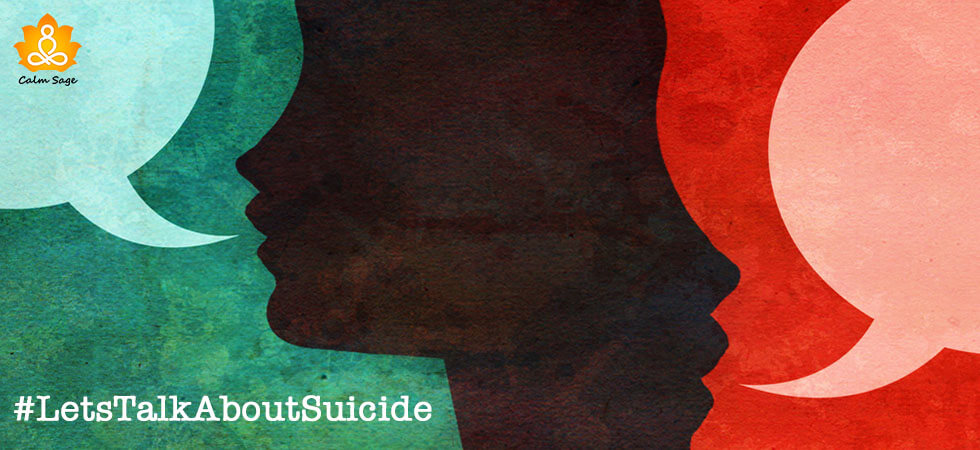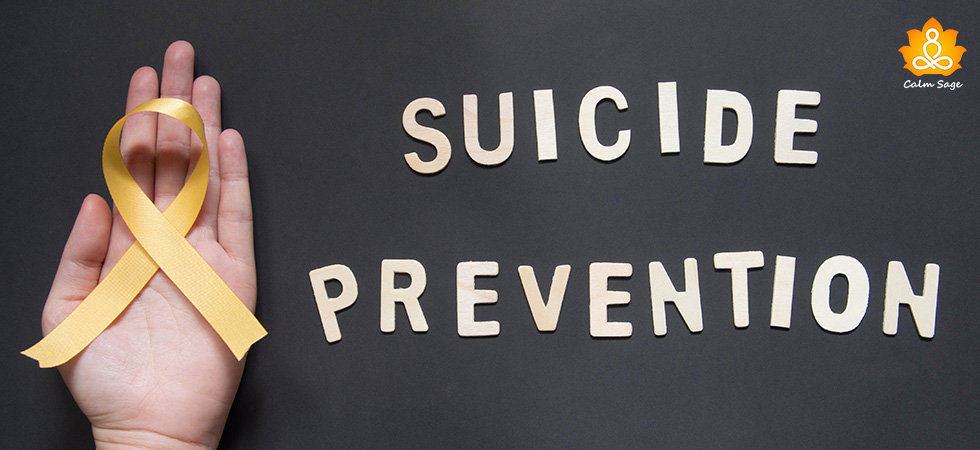#LetsTalkAboutSuicide: How To Safely And Responsibly Hold Conversations About Suicide

I was 22 when I was diagnosed with depression and before my diagnosis I lived with depression for almost six years. I was young when I first started experiencing depression and thoughts of suicide.
To me, all those years of depression were years of darkness. Those days I felt the world shrinking on me, the possibilities of a healthy future far away. The thought of suicide was refreshing and to me, it felt like as escape.
It wasn’t years later when I understood the value of keep living and keep fighting. When I told people about my suicide attempt, I got many messages from people who hadn’t talked to me since middle school. Some were sympathetic, some were criticizing.
At 22, I was unable to understand why people were not open on talking about a sensitive topic such as depression, anxiety, or suicide. Before I told my story on Facebook, I had seen movies, read books with characters dying by suicide. Most of the time, I kept thinking about that representation.
Did my attempt came from watching suicide ideation on-screen? Or was it because I read about suicide?
I have more questions that I’ll try to answer in this article; What impact does media representation have on our mental health? How do we talk about suicide ideation safely and responsibly online? How can we use social media to honor suicide victims and people struggling with mental health concerns?
Are Suicidal Thoughts Contagious?

Suicidal thoughts are not uncommon. These thoughts arise often when one faces stressful and challenging situations in life. These can include but are not limited to physical health issues, mental health struggles, abuse, trauma, loneliness, etc.
The thing to keep in mind is that not all think about a suicide attempt. While suicide is one of the main leading causes of death, it is a preventable crisis.
Based on the 1774 novel, “The Sorrows of Young Werther” by German write Johann Goethe, researcher David Phillips, in the 1970s, coined a term – “Werther Effect” (nowadays known as “copycat suicide”) to describe the influence of suicide representation in media. In the novel, the hero dies by suicide. In real life, a contagion followed. A fear that young men would want to kill themselves after reading the book. (The book is still banned in most of Europe).
David Phillips’ theory is that there is a direct link between media representations of suicide and contagion. Suicide contagion can be in two ways:
- Point Cluster
- Mass Cluster
Point clusters unfold in cities, towns, and communities where the death-by-suicide rate is higher. Mass clusters unfold on a broader scale such as when a public figure dies. For example: when Marilyn Monroe died by Barbiturate overdose, the suicide rate in Los Angeles doubled the month after she died.
Media Representation Of Suicide

In 2017, the Netflix show “13 Reasons Why” arose many questions regarding the representation and depiction of suicide. In a study done in 2019, it was recorded that there was a 28% increase in suicide rates in children aged 12-17.
In today’s age, when everything is digital, understanding this issue can be more complicated than ever. While many books, videos, and shows use content warnings to protect others from being triggered, is it enough?
At the same time, platforms like Instagram and Twitter make it hard for others to seek help by deactivating accounts or bring down posts that mention suicide or self-harm. Social media is a way for people to share and express themselves, to find others with the same concerns but can we hold safe conversations on social media?
Facebook has a tool that can help friends support each other when they express suicidal thoughts and behaviors. The fact that there are simple strategies and tips available online on a social media platform to help someone with suicidal thoughts is an amazing opportunity to offer support, show empathy, and come to each other’s aid.
What You Should Keep In Mind
World Health Organization (WHO) has put some guidelines for media that can be useful in reminding social media users to think responsibly before they post images, stories, myths, etc that can come under harmful or sensational behavior.
Instead of reposting stories with little to no amount of truth, we can help others struggling with thoughts of suicide, mental health struggles, and even honor suicide victims by providing accurate information, prevention helpline numbers, crisis text line, links to therapy. We can also use responsible and safe words when posting about a public figure’s suicide or death.
You can also provide similar guidelines to help young people learn to communicate responsibly about suicide, depression, and other mental health concerns.
Questions to keep in mind while holding conversations about suicide online:
- How will this affect my reader?
- Is there a way I can be more helpful?
- What if my post goes viral? Will it help?
- What comments might others make?
- Should I turn off commenting to protect my vulnerable reader?
How To Help Someone With Suicidal Thoughts?

Here are some tips to help you help someone with suicidal thoughts:
1. Validate Their Thoughts
It’s a myth when people say that suicide or suicidal thoughts are just a way to get attention. Brushing off or invalidating what your friend is saying is not the right thing to do. If they are sharing their thoughts with you, then you must listen to them and take them seriously.
2. Pay Attention To Non-Verbal Cues
People struggling with suicidal thoughts may never come and say, “I want to die”. Instead, they may say, “I want the pain to stop” or “I feel like a burden”. While you should pay attention to what they say, you must also pay attention to the non-verbal cues as well. Their body language, their actions may also let you know their struggles.
3. Be Compassionate
People struggling with suicidal thoughts listen to what you say. Don’t deny their distress or solve their problems for them. Be compassionate towards their struggles. Their feelings and thoughts are valid. You can help them by showing compassion and validating what they’re feeling.
4. Offer Your Support
Saying you’re there for them and constantly offering your support are two different things. Instead of just showing your support, keep in touch with your friend. Even after the crisis has passed, stay in touch with them. Offer your support, always.
5. Seek Professional Help
You can also help your friend by encouraging them to seek professional help. Forcing therapy may not help. As someone who cares, you can suggest therapy and therapists to your friend. You can make them understand that therapists are trained to help people struggling with negative thoughts.
You can reach trained and licensed professionals here.
Resources For Help

Supporting a loved one struggling with suicidal thoughts can be challenging. Sometimes talking to you or someone else might not help. In such cases, here are some suicide prevention helpline numbers you can help them reach out to:
- National Suicide Prevention Lifeline: 1800-273-8255.
- Crisis Text Line: text HOME to 741741.
- TrevorLifeline: 866-488-7386
- iCall: +91 9152987821
- AASRA: +91-9820466726
If you believe that your loved one is in immediate danger, then contact your nearest emergency room or contact your local helpline resource.
Thoughts of suicide should never be taken lightly. Be compassionate, show your support, and help your loved one talk about their experience with a trained counselor.
With the global pandemic, world crisis, police injustices around the world, struggles such as depression, anxiety, despair are common, especially in marginalized communities. Until we speak up and get the mental help we need, suicide and suicide ideation will prevail.
Reaching out is good but there should be something people can reach out to. Social media, while helpful can also be harmful. Make sure you take frequent breaks, mute notifications, and block keywords that may be harmful to you.
The progress may be complicated and messy. Mistakes will be made. But we need to make sure we learn from our mistakes. Let’s make a difference by holding safe and responsible conversations about suicide and suicide ideation.
We can save lives if we remember to be compassionate and responsible.
Suicide is never an option. We need to stop stigmatizing suicide and other serious mental health concerns.
#Let’sTalkAboutSuicide.
I hope this article was helpful. If you like to connect with us, you can write to us at info@calmsage.com or DM us on social media.
Let us know your thoughts and opinions on this blog in the comments below! We’re always here for you!
Take Care!




















